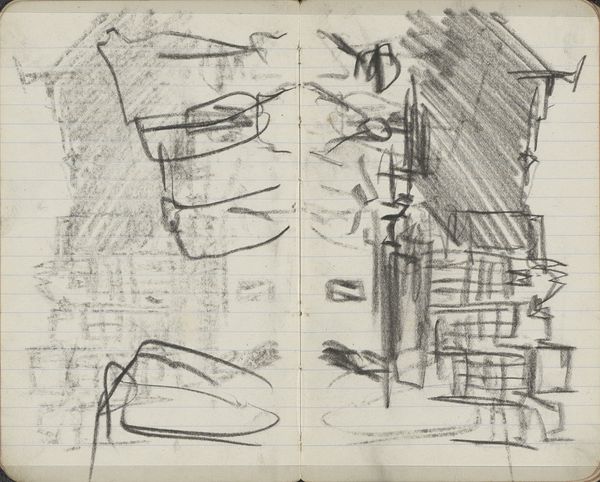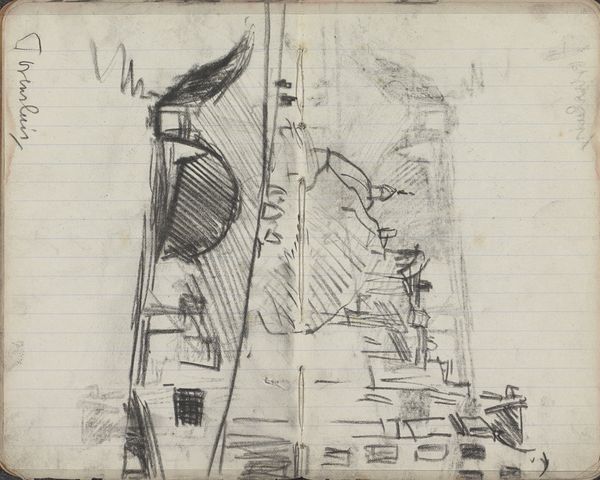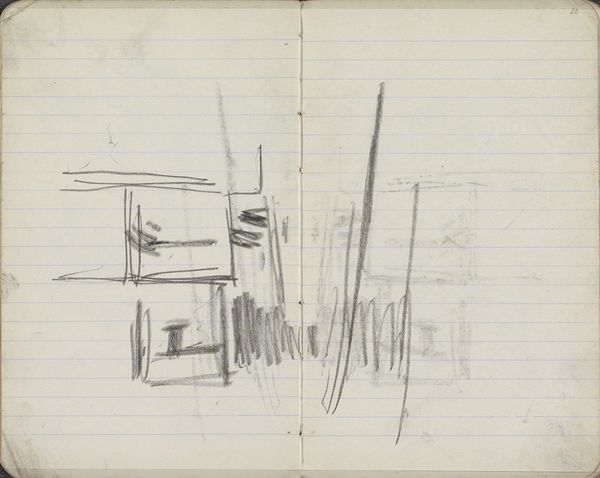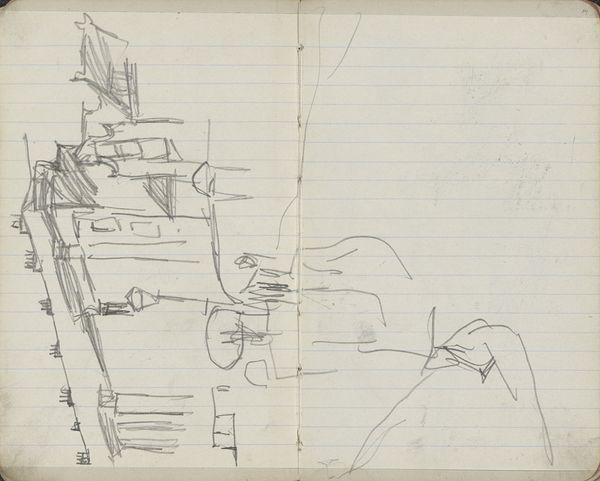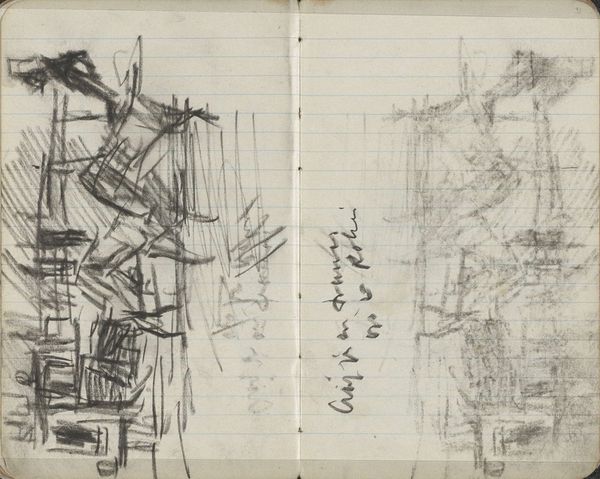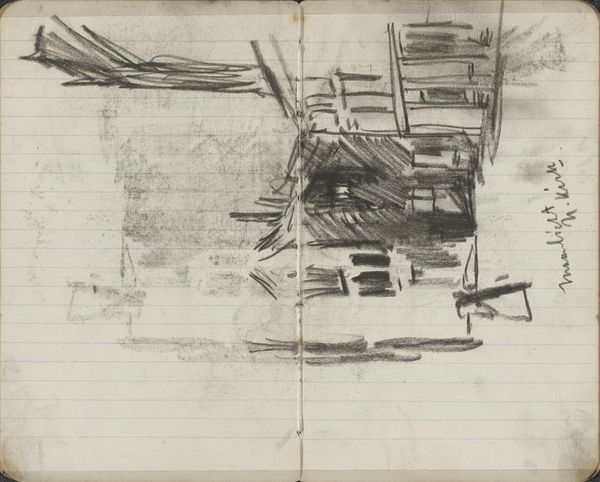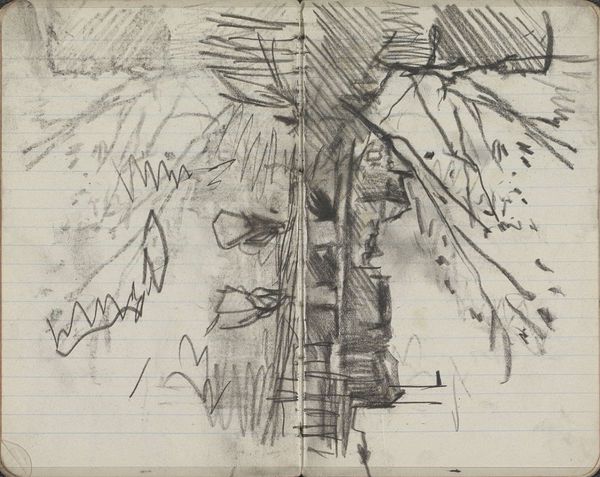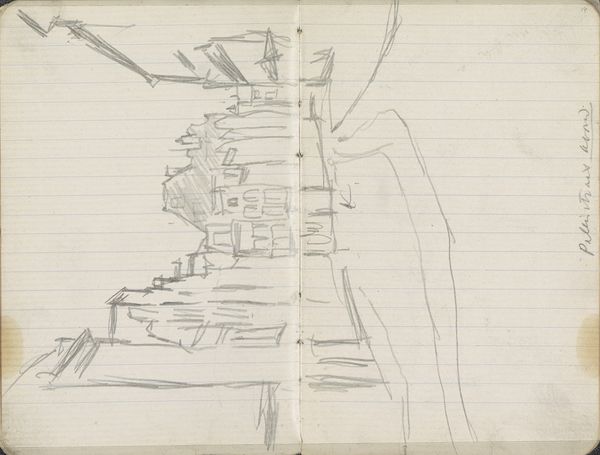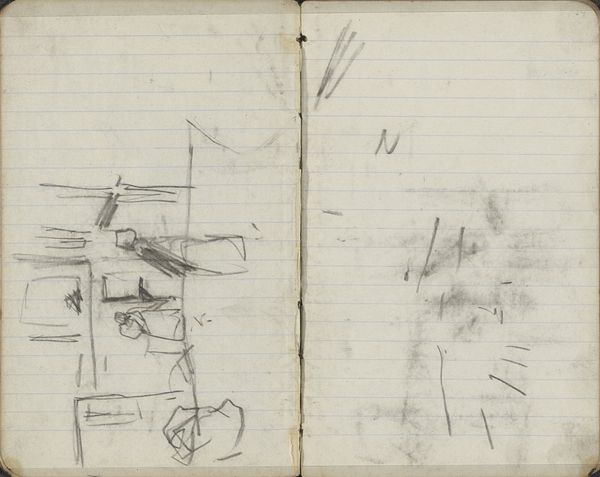
Paardentrams op de Nieuwmarkt te Amsterdam, gezien vanuit de Waag 1892 - 1900
0:00
0:00
#
quirky sketch
#
pen sketch
#
personal sketchbook
#
idea generation sketch
#
sketchwork
#
ink drawing experimentation
#
pen-ink sketch
#
square
#
sketchbook drawing
#
sketchbook art
#
initial sketch
Copyright: Rijks Museum: Open Domain
Curator: This pen and ink sketch by George Hendrik Breitner, dating from 1892 to 1900, captures the Nieuwmarkt in Amsterdam from the vantage point of the Waag. It’s currently held in the Rijksmuseum. Editor: It has a nervous energy, almost manic, with those scratchy lines attempting to define the space. The paper itself seems very ordinary. What's going on here, with this style? Curator: Well, let’s think about the materials first. Breitner was using readily available, inexpensive tools. This is a sketchbook page, an immediate response, a direct impression. Not some carefully prepared canvas destined for the salon. This gives a rawness and truth to the work that really fits the aesthetic. Editor: Precisely! Consider the role of the sketchbook itself in late 19th-century art. The rise of plein air painting meant artists were more frequently observing and documenting the world around them. Sketches like these became invaluable tools not just for studies but also to demonstrate a level of perceived "authenticity" and "modernity" within the academy and exhibition spaces. It suggests the immediacy of modern urban life. Curator: Yes, think of what was happening in Amsterdam at that time! Industrialization was accelerating. The trams Breitner depicts were transforming the city. It makes me wonder how Breitner chose this viewpoint, looking down on the bustling market from the more solid, static Waag building. The production of iron in the rail lines. The growth of transit for people using horsepower rather than by the force of the industrial engines of the railroad or steamship. All reflect how modern experience had the impact of creating rapid change in life. Editor: Absolutely. And that placement positions the viewer within a social hierarchy, looking down—perhaps commenting on the chaos and vibrancy of the Nieuwmarkt. Consider too that Nieuwmarkt has always been a site for public events and occasional political clashes. Breitner gives no real suggestion, through, of these more contested urban dynamics; still, we must always remember that a composition cannot capture it all. The medium itself seems as much as Breitner is communicating about the society and how it worked. Curator: A pertinent reading! It’s clear this wasn't just a casual doodle; Breitner's choosing the Waag to situate his sketch is an intentional comment on the urban experience during the second industrial revolution. This really lets us look at how technology shapes perception. Editor: It provides so many valuable hints for those who wish to examine how urban transformations in the Netherlands in the late 19th century were observed, digested and given an art form.
Comments
No comments
Be the first to comment and join the conversation on the ultimate creative platform.



